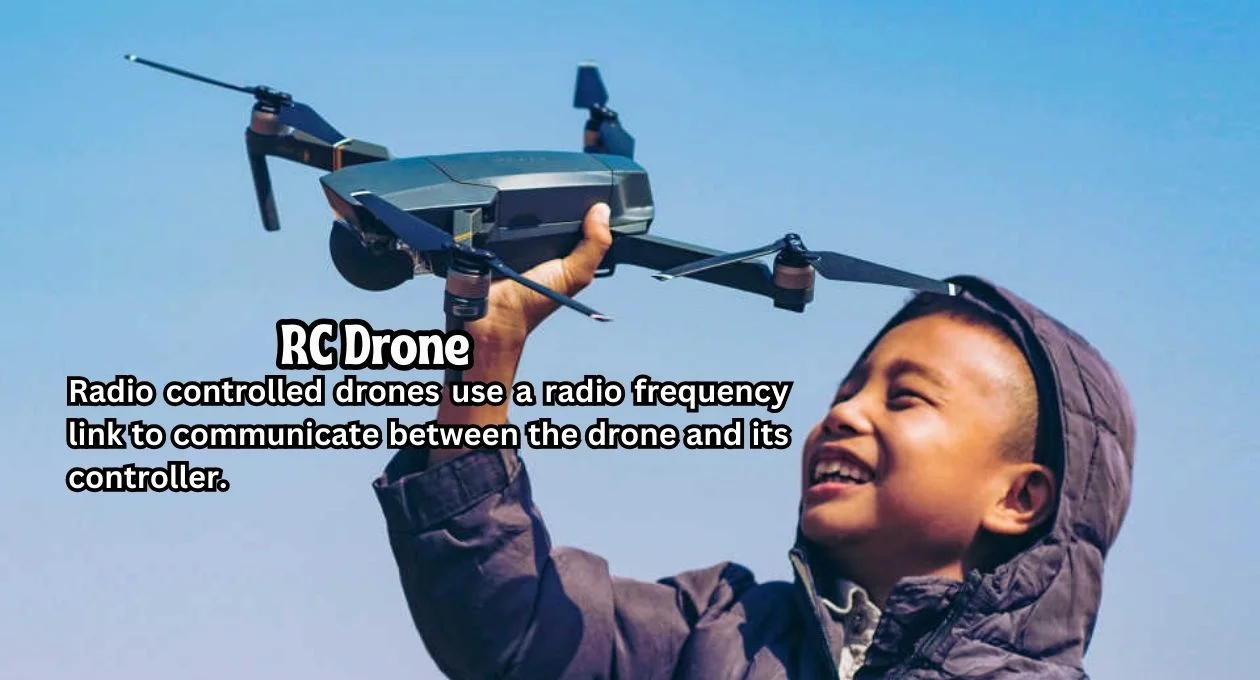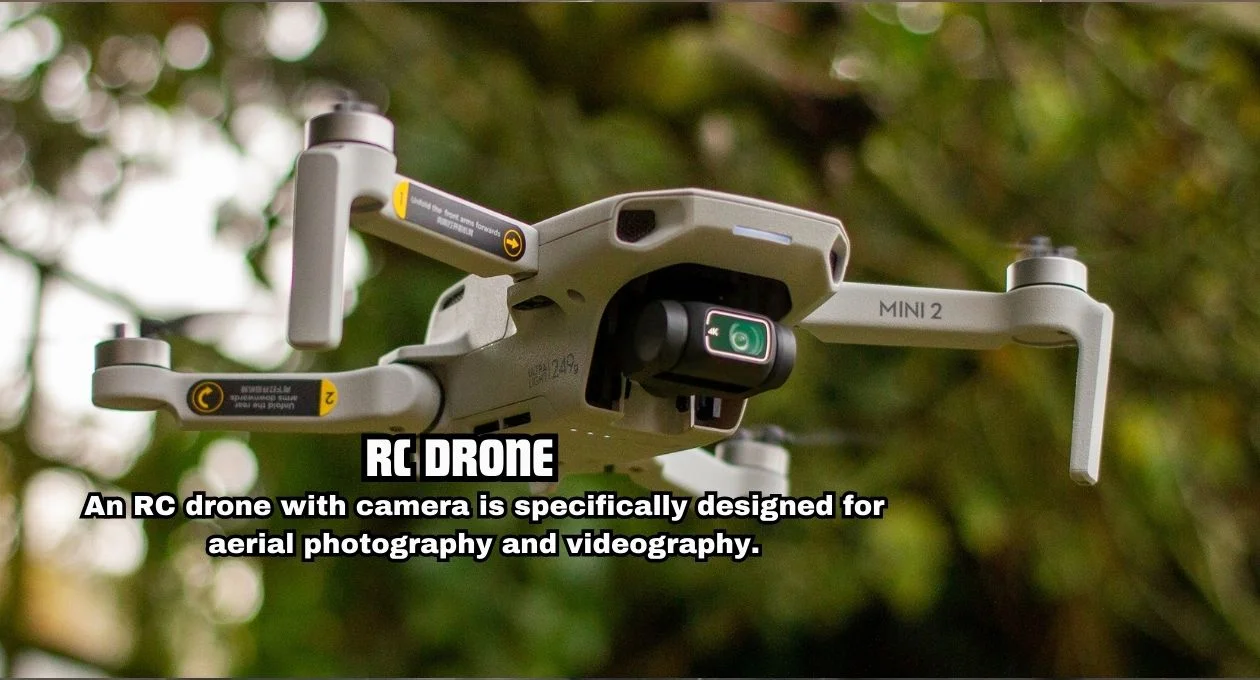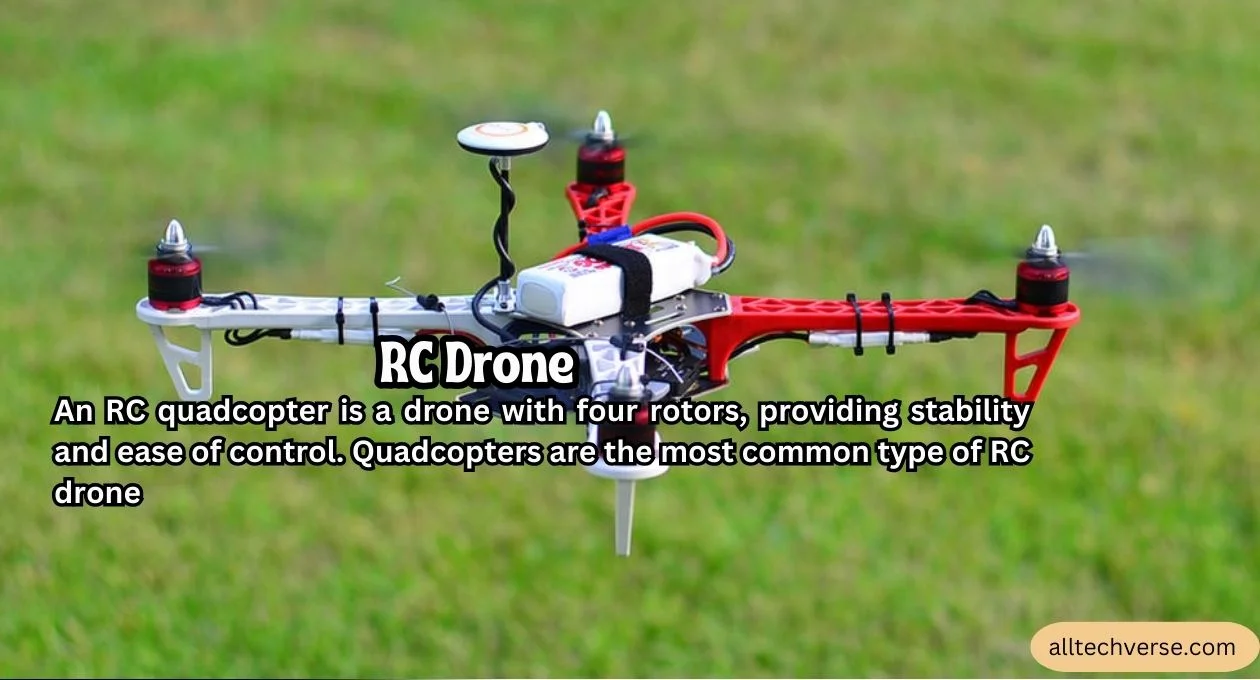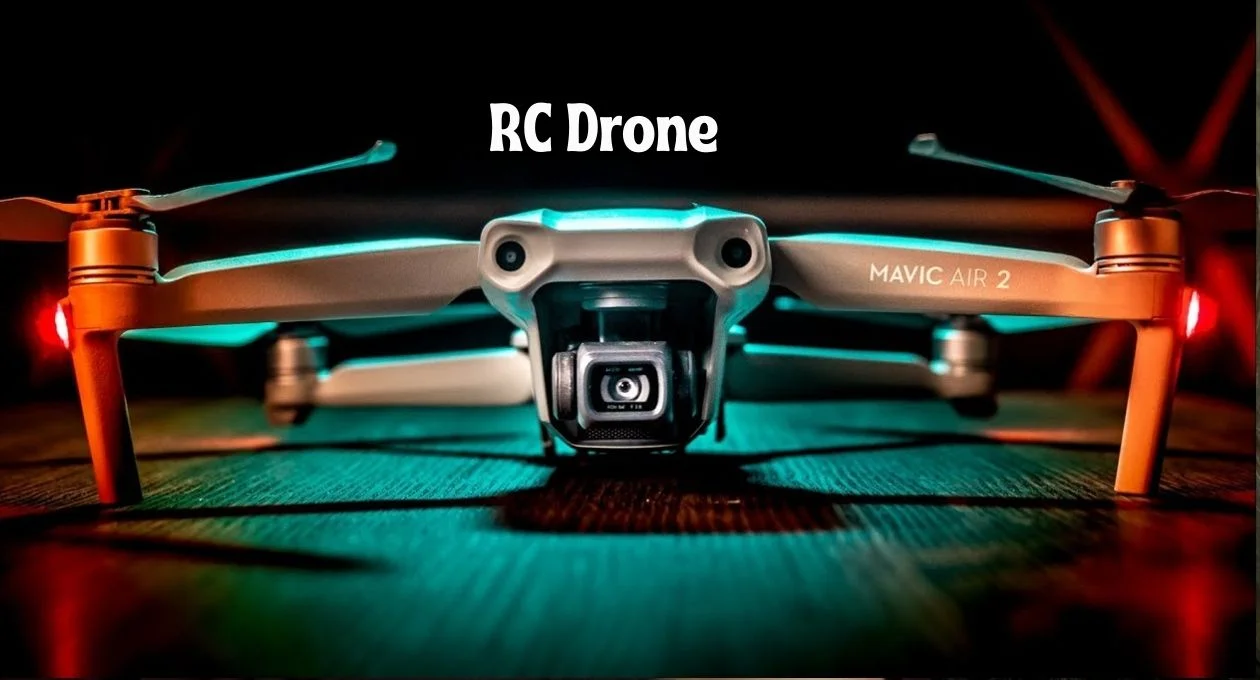Remote Controlled ‘rc drones’ have become incredibly popular among hobbyists, tech enthusiasts, and professionals. This blog explores various aspects of RC drones, explaining key terms and features to help you understand this exciting technology.
Understanding the basics of RC drones begins with familiarizing yourself with the different types available on the market. There are toy drones, which are great for beginners and children; camera drones, which are perfect for photography and videography enthusiasts; and racing drones, designed for speed and agility. Each type caters to different user needs and skill levels, helping you find the right drone to match your interests.
Another critical aspect to consider is drone technology, which includes features like GPS for navigation, gyroscopes for stability, and various sensors for obstacle detection and altitude control. These technologies not only enhance the flying experience but also ensure safety and precision. Many modern drones are equipped with high-definition cameras, allowing for stunning aerial photography and video capture, making them useful tools for both amateur and professional photographers.
RC Drone
An RC drone is a remote-controlled aerial vehicle operated via a radio transmitter. These drones are used for various purposes, including recreational flying, aerial photography, and even professional applications like surveying and delivery services.
When selecting an RC drone, it’s essential to consider the battery life and charging time. These factors directly impact how long you can enjoy uninterrupted flying sessions. Most drones come with rechargeable lithium-polymer (LiPo) batteries, which offer a good balance of weight and capacity. However, flight times can vary significantly, ranging from a few minutes to over half an hour, depending on the drone model and usage. Investing in extra batteries can be a wise decision to extend your flying sessions without waiting for a recharge.
Additionally, it’s crucial to be aware of regulatory requirements surrounding drone usage in your area. Many countries have specific guidelines that dictate where and how high you can fly an RC drone. For instance, you might need to register your drone if it exceeds a certain weight or adhere to no-fly zones around airports and other restricted areas. Understanding and complying with these regulations will ensure that your drone flying experience remains safe and legal.
Radio Controlled Drones
Radio controlled drones use a radio frequency link to communicate between the drone and its controller. This link enables the pilot to manage the drone’s movements, altitude, and other functions. Modern radio-controlled drones often feature advanced technologies such as GPS, obstacle avoidance, and automated flight modes.
Camera quality is a vital consideration when choosing an RC drone, especially for those interested in aerial photography and videography. High-end drones are equipped with 4K cameras that offer crisp and clear images, while mid-range options often include 1080p cameras. Some advanced models even feature gimbals for stabilizing the camera, ensuring smooth footage even in windy conditions. When selecting a drone, pay attention to the camera specifications to ensure it meets your requirements.

Flight modes and intelligent features are another important aspect to explore. Features such as Follow Me, Waypoints, and Return to Home add convenience and functionality to your flying experience. Follow Me mode allows the drone to autonomously track and follow the controller, making it perfect for capturing dynamic shots during activities like cycling or running. Waypoints enable pre-programmed routes, allowing the drone to fly to specific GPS coordinates, which is particularly useful for surveying or mapping tasks.
RC Drone Camera
An RC drone camera is an essential component for capturing aerial images and videos. These cameras can range from basic models for casual photography to high-resolution cameras for professional use. Some drones come with built-in cameras, while others allow for the attachment of external cameras.
When flying your RC drone, weather conditions play a significant role in ensuring a safe and enjoyable experience. Windy conditions can make it difficult to maintain control and can lead to accidents or loss of the drone. It’s advisable to choose calm, clear days for flying, and always check the weather forecast before heading out. Additionally, avoid flying in rainy or extremely cold conditions, as moisture can damage the drone’s electronics and cold temperatures can reduce battery performance.
Rc Drone insurance is another important consideration, especially if you plan to use your drone for commercial purposes or in populated areas. Insurance can cover potential liabilities, damage to the drone, or injury to others, providing peace of mind as you enjoy your hobby or professional activity. Many insurance policies also offer coverage for theft or loss, ensuring that you are protected against unforeseen circumstances. Investing in a good insurance plan can save you from significant financial loss and legal complications down the line.
RC Drone with Camera
An RC drone with camera is specifically designed for aerial photography and videography. These drones typically include high-quality cameras, gimbals for stabilization, and features such as live video streaming, making them perfect for capturing stunning aerial footage.
Understanding flight dynamics is essential for getting the most out of your RC drone. By learning how different weather conditions, such as wind speed and direction, affect your drone’s stability and performance, you can better anticipate and react to potential challenges during your flights. It’s also beneficial to familiarize yourself with the drone’s flight controls and modes, experimenting with different settings to find what works best for your particular needs and environment.

Moreover, community involvement can be a rewarding aspect of the drone-flying experience. Many enthusiasts join local or online drone clubs where they can share tips, participate in group flights, and even compete in drone racing events. Engaging with a community not only enhances your skills but also provides a support network of like-minded individuals who share a passion for this exciting hobby.
RC Drones with Camera
RC drones with cameras include a variety of models equipped with integrated cameras. These drones are popular among both amateur photographers and professional videographers. They offer diverse options in terms of camera quality, flight time, and additional features.
Piloting an RC drone also requires familiarity with local regulations and guidelines. Different regions have specific rules regarding drone flight, including altitude limits, no-fly zones, and registration requirements. Abiding by these regulations not only ensures your safety but also respects the privacy and security of others. Before taking your drone out for a flight, it’s essential to research and understand the relevant laws in your area to avoid potential penalties or confiscation of your equipment.
In addition to technical skills and regulatory knowledge, a fundamental aspect of operating an RC drone is developing a good sense of spatial awareness. This involves understanding the spatial relationship between the drone and its surroundings, which helps in avoiding collisions and capturing smoother footage. Practicing in diverse environments can enhance your ability to navigate through obstacles and adapt to different flying conditions. By gradually building your confidence and proficiency, you can enjoy a more fulfilling and adventurous drone-flying experience.
RC Quadcopter
An RC quadcopter is a drone with four rotors, providing stability and ease of control. Quadcopters are the most common type of RC drone, used for everything from recreational flying to professional applications like aerial surveying and mapping.
When operating an RC quadcopter, one crucial tip is to always ensure that your drone is within your line of sight. This not only helps in maintaining proper control over the drone but also prevents accidents and collisions that could occur due to obstructions or loss of signal. Additionally, practicing in open spaces away from people, buildings, and trees will help you become more confident and skilled in piloting your drone.

Another essential aspect is to regularly update your drone’s firmware.Keeping your drone’s software up-to-date ensures that it operates at its best and can help in avoiding technical issues during flights. Always check for updates before heading out to fly, and make sure to follow the manufacturer’s instructions for installing them correctly.
Big Remote Control Drone
A big remote control drone refers to larger drones, often equipped with advanced features and higher payload capacities. These drones are used in various industries, including agriculture, logistics, and surveillance, due to their ability to carry sophisticated equipment and cover large areas.
When flying a large Rc drone, safety should always be a top priority. Due to their size and capabilities, these drones can cause significant damage if not handled correctly. Always ensure that you have adequate space for takeoff, flight, and landing. Pre-flight checks, including inspecting the drone for any signs of damage and confirming that all components are functioning correctly, are essential steps to mitigate risks.
Additionally, thorough training and practice are crucial for mastering the operation of big drones. Many manufacturers and third-party providers offer certification courses that cover everything from basic piloting skills to advanced maneuvers and emergency procedures. By investing time in proper training, you not only improve the safety and efficacy of your drone flights but also comply with any regulatory requirements that may apply to the operation of large drones.
Drone Toys
Drone toys are small, simple drones designed for entertainment and educational purposes. These drones are easy to operate, making them ideal for beginners and children. They are typically more affordable and offer basic features, providing a fun introduction to drone flying.
Rc Drone toys have grown in popularity not just because of their affordability, but also because of their potential to spark interest in STEM (Science, Technology, Engineering, and Mathematics) fields among young users. These mini-drones often come with intuitive controls and can perform simple tricks and maneuvers, which help newbies grasp the basics of drone flight. Additionally, many of these drones can be used both indoors and outdoors, providing flexible options for practice and play.

Despite their simplicity, Rc drone toys can also serve as a stepping stone to more advanced drone piloting. As users become more comfortable with operating these smaller drones, they can transition to more sophisticated models equipped with cameras and advanced navigation features. This gradual progression helps build crucial piloting skills and a deeper understanding of flight dynamics, fostering long-term engagement with this exciting technology.
Mini RC Drones
Mini RC drones are small, lightweight drones that are highly portable and user-friendly. Despite their size, many mini drones come with impressive features such as cameras, FPV (First Person View), and various flight modes, making them perfect for casual flying and travel.
Ensuring proper battery management is crucial for the longevity and performance of your drone. Always use manufacturer-recommended batteries and avoid overcharging or completely draining them, as these practices can significantly reduce battery life. Additionally, store batteries in a cool, dry place and conduct regular checks for any signs of wear or damage to prevent accidents during flights.
Weather conditions play a vital role in drone operations, especially for larger and more sophisticated models. Windy or rainy weather can impede flight stability and even cause crashes. It is advisable to check the weather forecast before heading out and avoid flying in adverse conditions. By planning your flights around suitable weather, you can ensure safer and more enjoyable drone experiences.
Remote Controlled Drone
Rc drone is any drone operated using a handheld controller. These controllers send signals to the drone, enabling the pilot to control its flight and functions. Remote controlled drones range from basic models for beginners to advanced machines with numerous capabilities.
Drone safety regulations vary by country, but they generally aim to ensure the responsible use of these flying devices. Operators are often required to register their drones, especially if they exceed a specific weight threshold. Compliance with local airspace rules, including restrictions on flying near airports or over populated areas, is essential. By adhering to these regulations, drone pilots help promote a safe environment for both aerial and ground activities.
Moreover, maintenance is a critical component of drone ownership. Regular inspections and timely replacements of worn-out parts can significantly extend the life of the drone and prevent unexpected failures during flight. Keeping firmware and software updated ensures that the drone operates smoothly and benefits from the latest security features. Proper care and attention to maintenance not only enhance performance but also contribute to safer flights and a better overall user experience.
20 KM Range Drone Price
Drones with a 20 km range are high-end models designed for long-distance flights. These drones are equipped with powerful transmitters and advanced technology to maintain a stable connection over long distances. The price of a 20 km range drone varies widely depending on the brand, features, and additional equipment, but they are generally used by professionals for tasks requiring extensive coverage, such as mapping, surveying, and search and rescue operations.
These advanced long-range drones come with sophisticated features like obstacle avoidance, real-time HD transmission, and precise GPS tracking. They are designed to handle challenging environments, ensuring reliable performance even in complex terrains. Thanks to their powerful capabilities, these drones play essential roles in various professional fields, including environmental conservation, infrastructure inspection, and emergency response.
As the technology continues to evolve, the accessibility and affordability of long-range drones are expected to improve. This trend will likely expand their use beyond professional applications, making them increasingly popular among hobbyists and amateur videographers. Emerging innovations such as improved battery efficiency and lightweight materials will further enhance the usability and practicality of these cutting-edge drones.
FAQs
What is the maximum flight time for most consumer drones?
The maximum flight time for most consumer drones typically ranges from 20 to 30 minutes on a single charge. However, high-end models may offer extended flight times of up to 45 minutes or more, thanks to advanced battery technologies.
Do I need a license to fly a drone?
In many countries, a license or registration is required to operate drones, especially those above a certain weight threshold. It’s essential to check local regulations to understand the specific requirements for drone pilots in your area.
Can drones be flown at night?
Flying drones at night is subject to local regulations. Some regions allow night flights only under specific conditions, such as having anti-collision lights installed on the drone. Always check local laws and guidelines before conducting night flights.
What kind of maintenance do drones require?
Regular maintenance for drones includes checking and replacing propellers, ensuring battery health, inspecting for any physical damage, and keeping firmware and software up to date. Proper maintenance ensures optimal performance and safety during flights.
How far might a robot at any point fly from the regulator?
The distance of rc drone can fly from the controller varies by model and technology. Basic models may have a range of a few hundred meters, while advanced drones can maintain connections at distances of up to 20 km or more.
Can I fly my drone in populated areas?
Flying drones in populated areas is often restricted to ensure public safety and privacy. Many regions have regulations prohibiting flights over crowds, near airports, or in restricted airspace. Always abide by local laws to avoid penalties and ensure safe operations.
What are the benefits of using drones in agriculture?
Drones in agriculture provide benefits such as crop monitoring, soil analysis, and precision spraying, which can enhance yield and efficiency. They offer a bird’s-eye view of fields, enabling farmers to make informed decisions and manage their crops more effectively.

Conclusion
RC drones have revolutionized various fields by providing unique aerial perspectives and enhancing capabilities in numerous applications. Whether you’re a beginner looking for a simple drone toy or a professional in need of a sophisticated quadcopter, there’s an RC drone out there for you. Understanding the different types and features of RC drones will help you make an informed decision and find the perfect drone for your needs. Happy flying!
With advancements in technology, the potential uses for drones continue to expand, ushering in a new era of innovation and efficiency across various industries. From delivering packages to providing critical real-time data in disaster zones, drones are proving invaluable in unexpected ways. By embracing these flying innovations, we can look forward to a future where complex tasks are simplified, and new opportunities for progress and problem-solving are unlocked.
For More Information Keep Visiting AllTechVerse.



